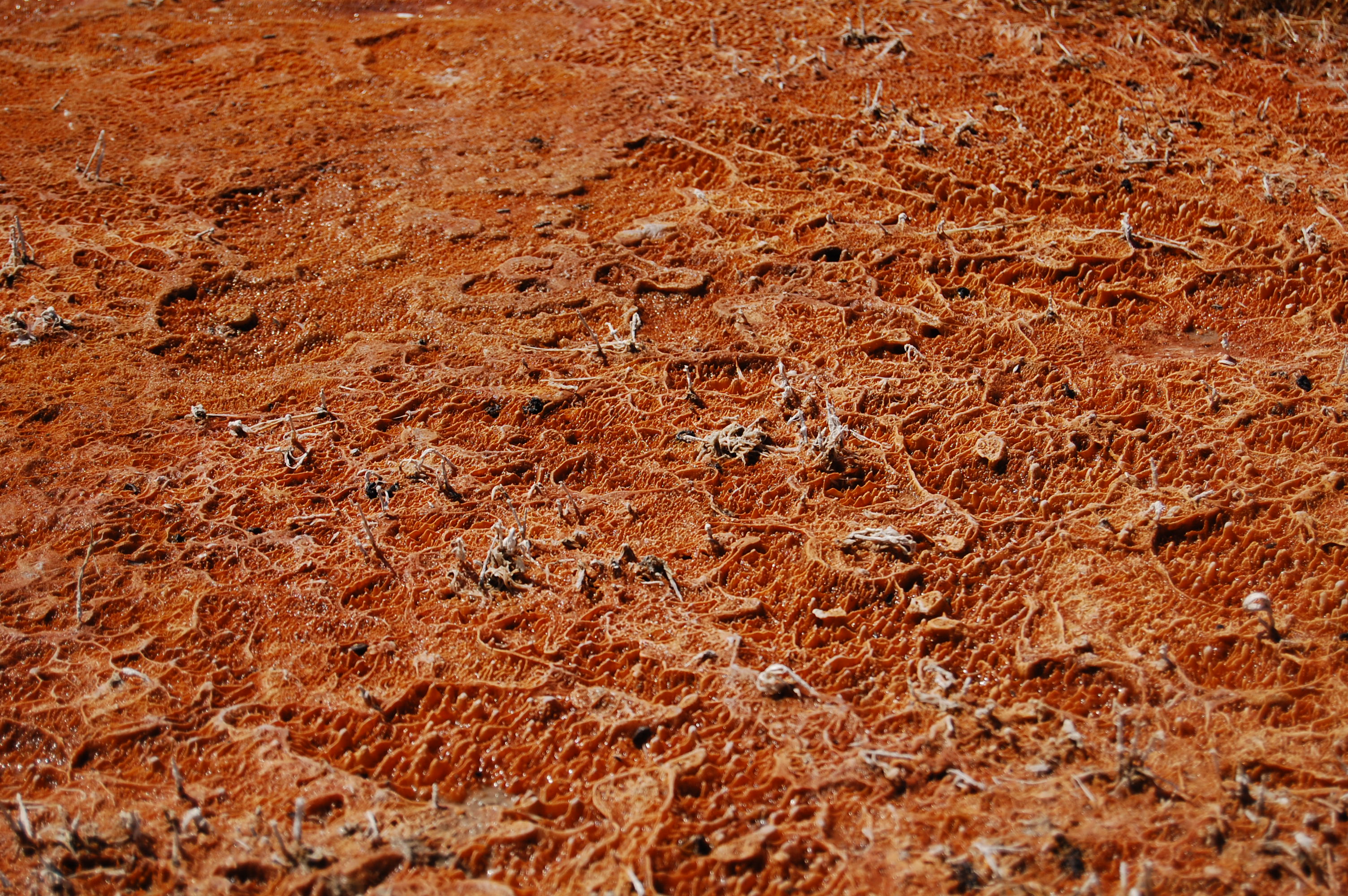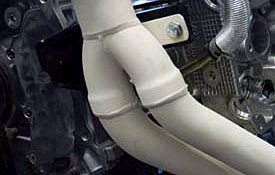|
Hayloft
A hayloft is a space above a barn, stable or cow-shed, traditionally used for storage of hay or other fodder for the animals below. Haylofts were used mainly before the widespread use of very large Baler, hay bales, which allow simpler handling of bulk hay. The hayloft is filled with loose hay from the top of a wagon, thrown up through a large door, usually some or more above the ground, often in the gable end of the building. Some haylofts have slots or holes (sometimes with hatches), each above a hay-rack or manger in the animal housing below. The hay could easily be dropped through the holes to feed the animals. Another method of using a hayloft is to create small bundles of hay (1–4 cubic feet), then hoist them up using a block and tackle—in this case a hay elevator to the room. This allows for more efficiency when moving hay around. The difference between a hayloft and a mow is significant. A mow is exposed to the weather, only elevated on a small platform off the gro ... [...More Info...] [...Related Items...] OR: [Wikipedia] [Google] [Baidu] |
Attic
An attic (sometimes referred to as a '' loft'') is a space found directly below the pitched roof of a house or other building. It is also known as a ''sky parlor'' or a garret. Because they fill the space between the ceiling of a building's top floor and its slanted roof, attics are known for being awkwardly-shaped spaces with difficult-to-reach corners and often exposed rafters. While some attics are converted into bedrooms, home offices, or attic apartments complete with windows and staircases, most remain difficult to access, and are usually entered using a loft hatch and ladder. Attics help control temperatures in a house by providing a large mass of slowly moving air, and are often used for storage. The hot air rising from the lower floors of a building is often retained in attics, further compounding their reputation as inhospitable environments. However, in recent years, they have been insulated to help decrease heating costs, since, on average, uninsulated attics ac ... [...More Info...] [...Related Items...] OR: [Wikipedia] [Google] [Baidu] |
Manger
__NOTOC__ A manger or trough is a rack for fodder, or a structure or feeder used to hold food for animals. The word comes from the Old French ''mangier'' (meaning "to eat"), from Latin ''mandere'' (meaning "to chew"). Mangers are mostly used in livestock raising and generally found at stables and farmhouses. They are also used to feed wild animals, e.g., in nature reserves. A similar trough providing drinking water for domestic or non-domestic animals is a watering trough and may be part of a larger watering structure called abreuvoir. The manger in Christianity The manger is associated with nativity scenes where Mary and Joseph, forced by necessity to stay in a room for animals instead of a guest room, used a manger as a makeshift crib for the Baby Jesus. ( ''phatnē''; Luke 2:7). Gallery File:Devil's_Farmhouse,_Mellieha.jpeg, 18th century limestone mangers at The Devil's Farmhouse in Mellieha, Malta. File:Donkey eating.jpg, Donkey eating apples from a steel tro ... [...More Info...] [...Related Items...] OR: [Wikipedia] [Google] [Baidu] |
Silage
Silage is fodder made from green foliage crops which have been preserved by fermentation (food), fermentation to the point of souring. It is fed to cattle, sheep and other ruminants. The fermentation and storage process is called ''ensilage'', ''ensiling'', or ''silaging''. The exact methods vary, depending on available technology, local tradition and prevailing climate. Silage is usually made from grass crops including maize, sorghum or other cereals, using the entire green plant (not just the grain). Specific terms may be used for silage made from particular crops: ''oatlage'' for oats, ''haylage'' for alfalfa (''haylage'' may also refer to high dry matter silage made from hay). History Using the same technique as the process for making sauerkraut, green fodder was preserved for animals in parts of Germany since the start of the 19th century. This gained the attention of French agriculturist Auguste Goffart of Sologne, near Orléans. He published a book in 1877 which describ ... [...More Info...] [...Related Items...] OR: [Wikipedia] [Google] [Baidu] |
Thermophillic
A thermophile is a type of extremophile that thrives at relatively high temperatures, between . Many thermophiles are archaea, though some of them are bacteria and fungi. Thermophilic eubacteria are suggested to have been among the earliest bacteria. Thermophiles are found in geothermally heated regions of the Earth, such as hot springs like those in Yellowstone National Park and deep sea hydrothermal vents, as well as decaying plant matter, such as peat bogs and compost. They can survive at high temperatures, whereas other bacteria or archaea would be damaged and sometimes killed if exposed to the same temperatures. The enzymes in thermophiles function at high temperatures. Some of these enzymes are used in molecular biology, for example the ''Taq'' polymerase used in PCR. "Thermophile" is derived from the (''thermotita''), meaning heat, and (''philia''), love. Comparative surveys suggest that thermophile diversity is principally driven by pH, not temperature. Classificat ... [...More Info...] [...Related Items...] OR: [Wikipedia] [Google] [Baidu] |
Thermal Insulation
Thermal insulation is the reduction of heat transfer (i.e., the transfer of thermal energy between objects of differing temperature) between objects in thermal contact or in range of radiative influence. Thermal insulation can be achieved with specially engineered methods or processes, as well as with suitable object shapes and materials. Heat flow is an inevitable consequence of contact between objects of different temperature. Thermal insulation provides a region of insulation in which thermal conduction is reduced, creating a thermal break or thermal barrier, or thermal radiation is reflected rather than absorbed by the lower-temperature body. The insulating capability of a material is measured as the inverse of thermal conductivity, thermal conductivity (k). Low thermal conductivity is equivalent to high insulating capability (R-value (insulation), resistance value). In thermal engineering, other important properties of insulating materials are product density, density (ρ) ... [...More Info...] [...Related Items...] OR: [Wikipedia] [Google] [Baidu] |
Compost
Compost is a mixture of ingredients used as plant fertilizer and to improve soil's physical, chemical, and biological properties. It is commonly prepared by Decomposition, decomposing plant and food waste, recycling organic materials, and manure. The resulting mixture is rich in plant nutrients and beneficial organisms, such as bacteria, protozoa, nematodes, and fungi. Compost improves soil fertility in gardens, landscaping, horticulture, urban agriculture, and organic farming, reducing dependency on commercial chemical fertilizers. The benefits of compost include providing nutrients to crops as fertilizer, acting as a soil conditioner, increasing the humus or Humic acids, humic acid contents of the soil, and introducing beneficial microbes that help to suppress pathogens in the soil and reduce soil-borne diseases. At the simplest level, composting requires gathering a mix of green waste (nitrogen-rich materials such as leaves, grass, and food scraps) and brown waste (woody ma ... [...More Info...] [...Related Items...] OR: [Wikipedia] [Google] [Baidu] |
Hay Elevator
A hay elevator is an elevator that hauls bales of hay or straw up to a hayloft, the section of a barn used for hay storage. Hay elevators are either ramped conveyor belts that bales rest on, or a mechanized pair of chains that holds bales taut between them. The term ''hay elevator'' also includes machinery involved in the stacking and storage of bales. A typical hay elevator includes an open skeletal frame, with a chain that has dull 3-inch spikes every few feet along the chain to grab bales and drag them along. Prior to rural electrification, barns were equipped with a vertical pulley and a horizontal track along which a bale of hay was guided manually. See also *Baler A baler or hay baler is a piece of farm machinery used to compress a cut and raked crop (such as hay, cotton, flax straw, salt marsh hay, or silage) into compact bales that are easy to handle, transport, and store. Often, bales are config ... References Agricultural machinery {{agri-stub ... [...More Info...] [...Related Items...] OR: [Wikipedia] [Google] [Baidu] |
Block And Tackle
A block and tackle or only tackle is a system of two or more pulleys with a rope or cable threaded between them, used to provide tension and lift heavy loads. The pulleys are assembled to form blocks and then blocks are paired so that one is fixed and one moves with the load. The rope is threaded through the pulleys to provide mechanical advantage that amplifies the force applied to the rope. Hero of Alexandria described cranes formed from assemblies of pulleys in the first century. Illustrated versions of Hero's ''Mechanica'' (a book on raising heavy weights) show early block and tackle systems. Overview A block is a set of pulleys or sheaves mounted on a single frame. An assembly of blocks with a rope threaded through the pulleys is called tackle. The process of threading ropes or cables through blocks is called "reeving", and a threaded block and tackle is said to have been "rove". A block and tackle system amplifies the tension force in the rope to lift heavy loads ... [...More Info...] [...Related Items...] OR: [Wikipedia] [Google] [Baidu] |
Desperate Conflict In A Barn
Desperate may refer to: * Despair (emotion), a feeling of hopelessness * ''Desperate'' (film), a 1947 suspense film directed by Anthony Mann * ''Desperate'' (Divinyls album), a 1983 album by Australian rock group Divinyls * ''Desperate'' (Daphne Khoo album), the 2007 debut album of Daphne Khoo, or its title track * "Desperate", a song by South Korean boy group VIXX from ''Kratos'' (EP) * "Desperate", a 2009 song by David Archuleta from ''David Archuleta'' (album) * "Desperate", a 2010 song by Fireflight from '' For Those Who Wait'' * "Desperate", a song by Jonas Blue from his 2018 album ''Blue'' * "Desperate", a 2023 song by Neffex Neffex (stylized as in all caps) is an American music project by Bryce Savage (born December 30, 1993) and, until 2021, Cameron Wales. They produced remixes and original songs characterized by a mixture of Electronic music, electronic and Rap (g ... * "Desperate", a 2001 song by Suburban Legends from '' Suburban Legends'' * " Desperate (Jamie Mac ... [...More Info...] [...Related Items...] OR: [Wikipedia] [Google] [Baidu] |
Gable
A gable is the generally triangular portion of a wall between the edges of intersecting roof pitches. The shape of the gable and how it is detailed depends on the structural system used, which reflects climate, material availability, and aesthetic concerns. The term gable wall or gable end more commonly refers to the entire wall, including the gable and the wall below it. Some types of roof do not have a gable (for example hip roofs do not). One common type of roof with gables, the 'gable roof', is named after its prominent gables. A parapet made of a series of curves (shaped gable, see also Dutch gable) or horizontal steps (crow-stepped gable) may hide the diagonal lines of the roof. Gable ends of more recent buildings are often treated in the same way as the Classic pediment form. But unlike Classical structures, which operate through post and lintel, trabeation, the gable ends of many buildings are actually bearing-wall structures. Gable style is also used in the design of ... [...More Info...] [...Related Items...] OR: [Wikipedia] [Google] [Baidu] |






